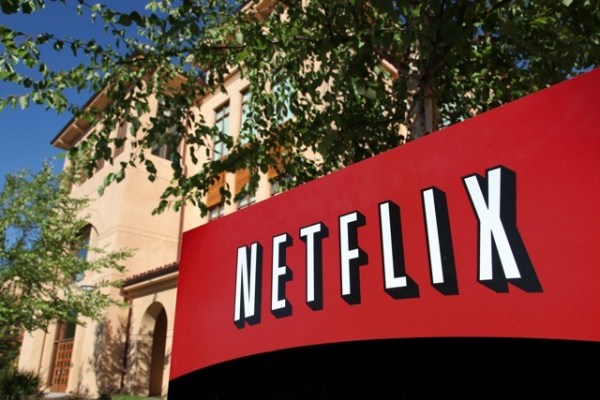Netflix yesterday announced that its viewers watched over 1 billion hours of video over the course of June, which comes down to about an hour of video per subscriber per day. At the time I wrote about it, I pointed out that chances are, each hour of Netflix viewing means one less hour being watched of regular old live TV.
BTIG analyst Richard Greenfield extrapolated that data and declared Netflix the “most viewed cable network on television.” (Free registration required) It’s an imperfect comparison for a number of reasons, in part due to the number of accounts that Netflix subscribers share per household. But it’s indicative of the shift in attention that’s occurring, as viewers begin to watch less broadcast and cable television, and move toward on-demand shows that are streamed online.
I forget where I first heard about it, but YouTube Director of Product Management Hunter Walk has this theory about how people watch TV. Paraphrasing, it goes like this: People watch five hours of TV a day, and you can generally break it down into three categories. The first category is must-see TV, which makes up hour one. Then there’s “nice to see” TV, which makes up hours two and three. And then there’s basically filler — people just sort of hanging out with the TV on, but not really totally engaged.
For now, YouTube and Netflix are focused on hours four and five, just chipping away at the fringes of what people watch. And they’re apparently succeeding, as anyone looking at their growth metrics will be able to recognize. It’s when they start getting into hours two and three that the whole thing gets really interesting.
Cable TV And The Innovator’s Dilemma
I was reminded of The Innovator’s Dilemma last month ago when reading about Clayton Christensen in the New Yorker. It had been a while since I’ve read the book, but the bio gave a pretty good summary of Christensen’s argument as it applied to the steel market and the mini-mills that took hold of the industry by starting out with cheap, low-margin goods and gradually working their way upmarket, crushing the incumbents along the way.
Sound familiar? Netflix has a low-margin streaming service, at just $7.99, that is much cheaper than what people pay for cable. In fact, most of the big cable guys have scoffed at creating competing offerings. And why would they?!?! Look at Netflix’s streaming margins, compare that to how much money cable companies are making from their packages of content, and you can see why they wouldn’t bother competing at the sub-$10 price point.
The thing is, we’ve already seen this movie play out — in fact, it played out as cable overcame broadcast TV. Once upon a time, you could get 500 cable channels, but there was never anything on TV. The big cable networks — the Turners of the world especially — were basically just syndicating shows like Seinfeld and Law & Order. There’s still a lot of that, but check out what happened over the last ten years: rather than just being “rerun TV,” networks like FX, AMC, USA, and yes, TNT and TBS, have all begun creating compelling original programming of their own.
The New New Networks
Well guess what? Pretty soon, Netflix won’t just be a place where you watch rerun TV. The company is betting big on original programming, including Kevin Spacey and David Fincher’s House of Cards, which is filming now; Orange Is The New Black, from Weeds creator Jenji Kohan; Eli Roth original horror series Hemlock Grove; and, of course, the triumphant return of Arrested Development. Meanwhile, YouTube is investing nine figures developing and promoting 100+ original channels of its own. Hulu, too, is investing heavily in its own originals and exclusive content from international partners, with the hopes of becoming less dependent on the broadcast networks that helped found it.
And all of these low-cost services are available on a wide range of mobile devices — and increasingly on connected TVs and game consoles. That means that more and more viewers have access to that video on the go, and on the biggest screen in the house. Watching Netflix is no longer about hunching over a computer screen or trying to figure out how to hook up your laptop to the TV.
Cable networks are fighting back, with the promise of TV Everywhere, but frankly, outside of HBO Go, few are doing it well or doing it at all. For the most part, outside of Time Warner-owned networks and a few from Disney, not many cable channels have apps of their own or make their content available on apps from cable and satellite companies. I’ve heard that there’s a new wave of networks that’ll be coming out with TV Everywhere services, but most will roll out slowly over the next 18-24 months. That gives the streaming players a huge window of opportunity to continue disrupting the traditional cable model.
The big cable guys aren’t stupid. The understand that there’s a reckoning coming, and that 10 percent price increases year after year are going to hinder their ability to compete with lower-priced options. But they’re also kind of constrained in what they can do about that, given the way deals are done with the networks. Some are experimenting with lower-priced packages of content, but for the most part, their game has been to “add value” to the existing package, with increased video-on-demand offerings, mobile and connected TV apps and the like.
It’ll be interesting to see how it all plays out. I’ve been watching this drama unfold (very slowly) for years, and have been amazed at how little has changed as time has gone on. At the same time, I still think there’s opportunity for massive disruption, and believe it’s only a matter of time before the guys like Netflix actually start eating into primetime viewing. Maybe not first-hour must-see TV, but hours two and three instead.
